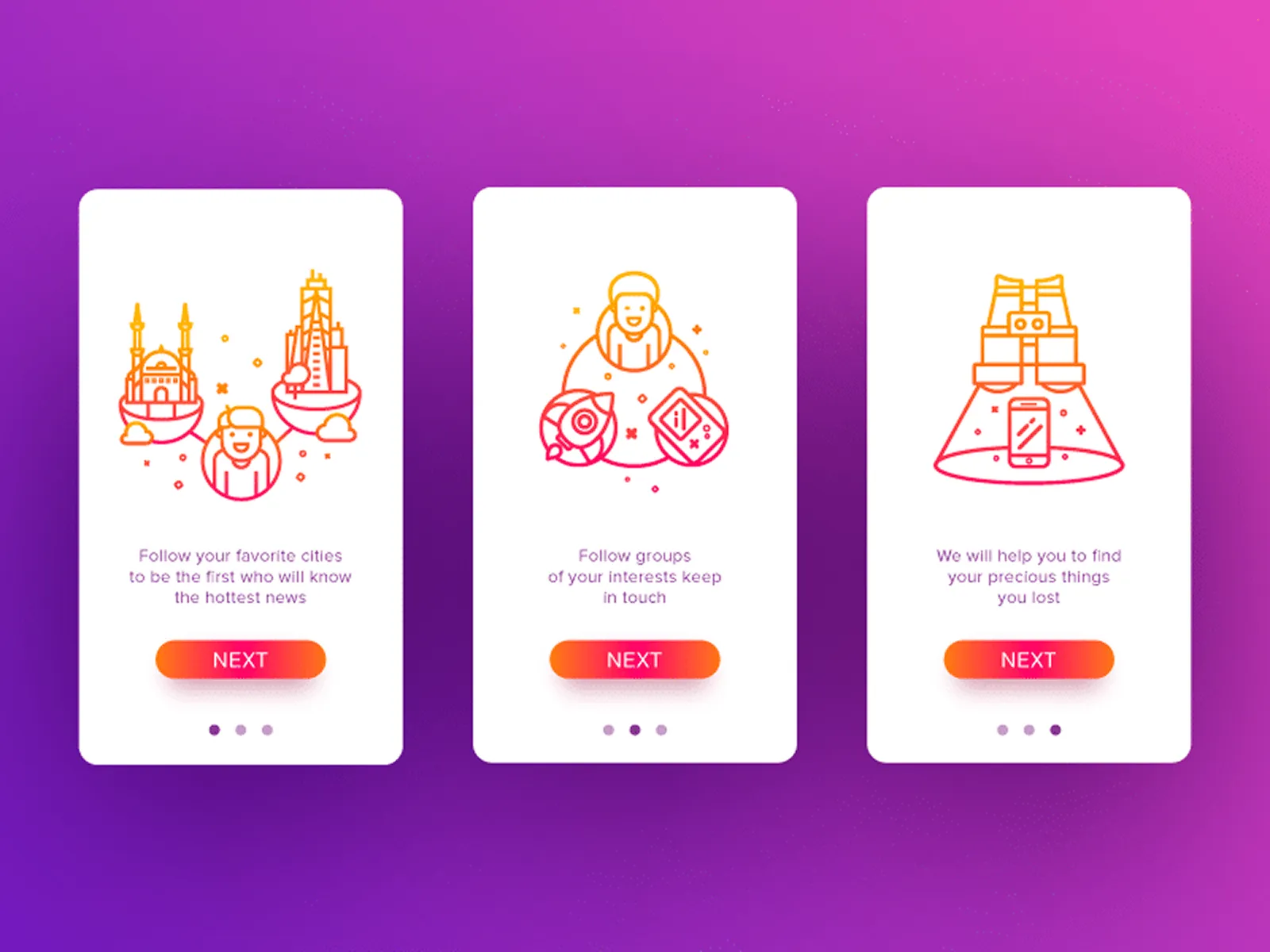.svg)
.svg)
.svg)
.svg)
.svg)
.svg)
.svg)
.svg)
.svg)
.svg)
.svg)

Every once in a while, we all need a guiding hand, someone who helps us look around and get familiar with what’s happening. We experience the need to onboard at a lot of places. Starting a new job? Learning how to play a game? Perhaps logging into a new app?
A good user onboarding flow is what can be a deal-maker or breaker for your users when it comes to UX design in India. The onboarding process is more than a simple tour of your product.
Life without effective user onboarding looks a bit like this:
1. Break bank for acquisition.
2. Find new customers. Hooray, they have the product now.
3. Oh, they went.
4. Repeat?
During the onboarding process, a good designer will always illustrate and explain why their product is the right fit for the user and how they can get the most out of it by getting started ASAP. The idea is to make the users feel that they know what you’re offering and they’ve known it for quite some time now.This is how you get them into the habit of using your product in their daily. In this post, we’ll go through what user onboarding means and some best practices you should follow while curating the user onboarding experience.
In the world out there, with vast and varying personalities, there are hundreds of definitions of User Onboarding, and we’ve gone through them all. But in our experience, user onboarding is the step where you guide the users to identify value in the products you create.
Most products follow the initial experience, basic training, and final roughing of the edges by reminding users of various elements. This entire process helps users get acquainted and acclimated with your product.
The ultimate goal, however, is to help users identify and deeply connect with the value of your product. That’s when they convert from a lurker or casual user to a paying customer. And if they associate the value well, they shall keep coming back to you time and again.
1. User onboarding is like educating your customers about the value you’re bringing into their lives with your amazing product.
2. The user onboarding process shouldn’t end once the customer is ‘on board’. It should reverberate throughout the customer journey of using your product.
3. Always think about segmenting your customers and metrics to track the quality of the onboarding cycle.

We all have unique and different learning curves as well as styles. So, if you assume that your users will spend the same amount of time and quality during the onboarding process, think again. And THINK HARD.
Because a product with an onboarding process that satisfies you isn’t going to create a lasting business.
In case your product is going to be exposed to and used by a number of groups, you try creating a segmentation system. How? Ask for their category as they start.

74% of users struggle with new apps and websites and end up watching a video separately to understand how. The reason why is simple. Videos and interactive tours always make your product appear more prime. The ones that lack this never convert after the user opens their app initially.
Visuals make the onboarding journey easy for your users. It feels more alive.





Gamification is a great way to keep your users engaged as if they’re playing a video game. It’s more often that people get tired and discouraged to use your app than you can imagine. Everything from badges, to points, and leaderboards are great ways to celebrate your user’s accomplishments.
Be it completing a 6-month usage mark on your app, or being a frequent shopper, include elements to celebrate and highlight that you value your users’ time and participation with the product.

We all love it when Instagram lets you personalize the color of your chat theme and when WhatsApp lets you set a custom wallpaper for chats, right? It’s because they chose to personalize and let the user have control.
When users feel that they are in control, they are more likely to associate better with that product.
The most common example of personalizing in 2022 is giving the user control of light/dark mode as well as other accents and including the user’s names all around the app.
It has become nearly impossible today to avoid any change in the way we marketing our products digitally. This means that everyone wants a set of ‘best practices’ to follow.
As we said initially, the way you approach user onboarding can be the difference between its success or failure. It makes a lot of difference when it comes to user retention. We hope these practices help.







